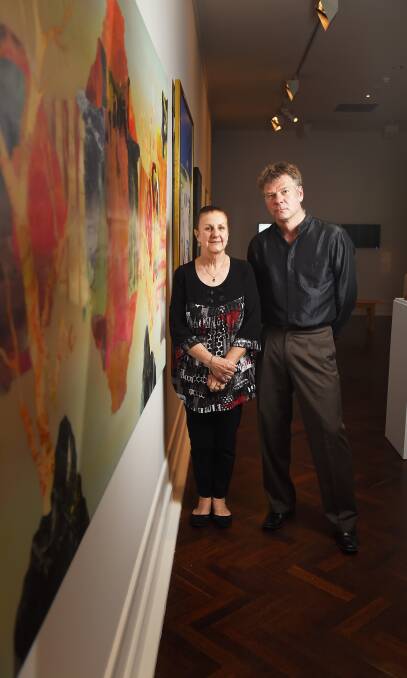It’s hard to believe that only 60 years ago, Australian soil was willingly handed over to become a testing ground for atomic bombs bigger than those dropped at Hiroshima.
Subscribe now for unlimited access.
or signup to continue reading

The once-secret British nuclear tests at Maralinga – and their legacy of indigenous displacement, plutonium contamination and scores of deaths from the resulting radiation – are a shameful period of Australian history.
But 60 years on from the date of the first bomb in 1956, an academic visiting Ballarat this week says it’s a history that must be told – and remembered.
Elizabeth Tynan, based at Townsville’s James Cook University, has spent years researching the Maralinga tests, revealing the role of investigative journalists, whistleblowers, politicians and scientists who have uncovered the story over the years.
She will this weekend launch her book, Atomic Thunder: The Maralinga Story, at the Art Gallery of Ballarat, alongside an indigenous art exhibition curated by JD Mittmann.
“Someone said to me the name Maralinga should be just as important to Australians as Gallipoli...it had as profound effect on our territory and on our sovereignty as well. The British took over our territory and did stuff to it that they shouldn’t have been doing,” Dr Tynan said.
She said the saga was an indictment not only on the British government, but on Robert Menzies, who willingly handed over the territory without consulting the Australian people or the local indigenous community.
Dr Tynan also said most people weren’t aware about the extent of the nuclear bombing and the plutonium contamination that wasn’t cleaned up for decades afterwards.
“It’s a terrible episode in Australian history, it’s really shameful what went on,” she said.
She said the accompanying exhibition had powerful images that left her “gobsmacked”.
“When you see an atomic mushrooms cloud painted in Aboriginal dot style, it just hits you between the eyes.
“Large national events like this are best dealt with creatively and the artists and musicians and playwrights who have responded to Maralinga….it’s a really good way of processing what went on and trying to come to terms with it.”
Curator JD Mittmann said he collected works from across Australia to tell Maralinga’s story, but also commissioned work from the Yalata people, who now live in Oak Valley.
“When I went to the community to seek their permission to do this and encourage their ownership, it became clear they were very intent for this story to be told,” he said.
He said the artwork profoundly told the story of “nuclear colonialism”.
The launch of Atomic Thunder and Black Mist Burnt Country: Testing the Bomb will be held this Saturday at the Art Gallery of Ballarat. Mr Mittmann will lead a walkthrough of the exhibition at 11am, with Dr Tynan’s book launch at 2pm.














